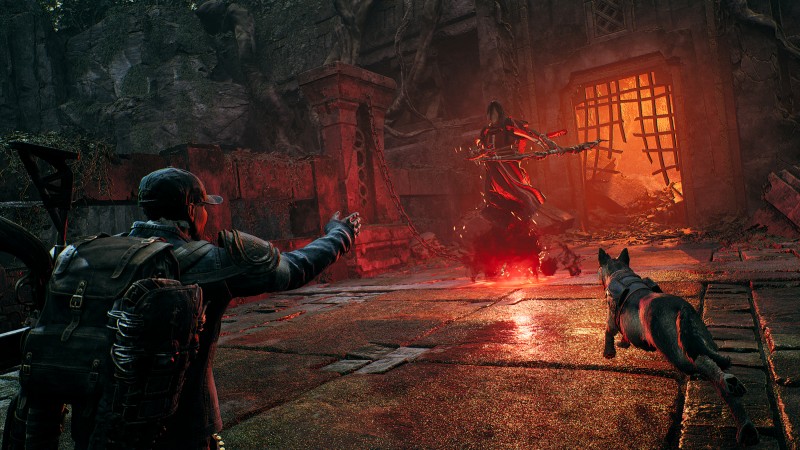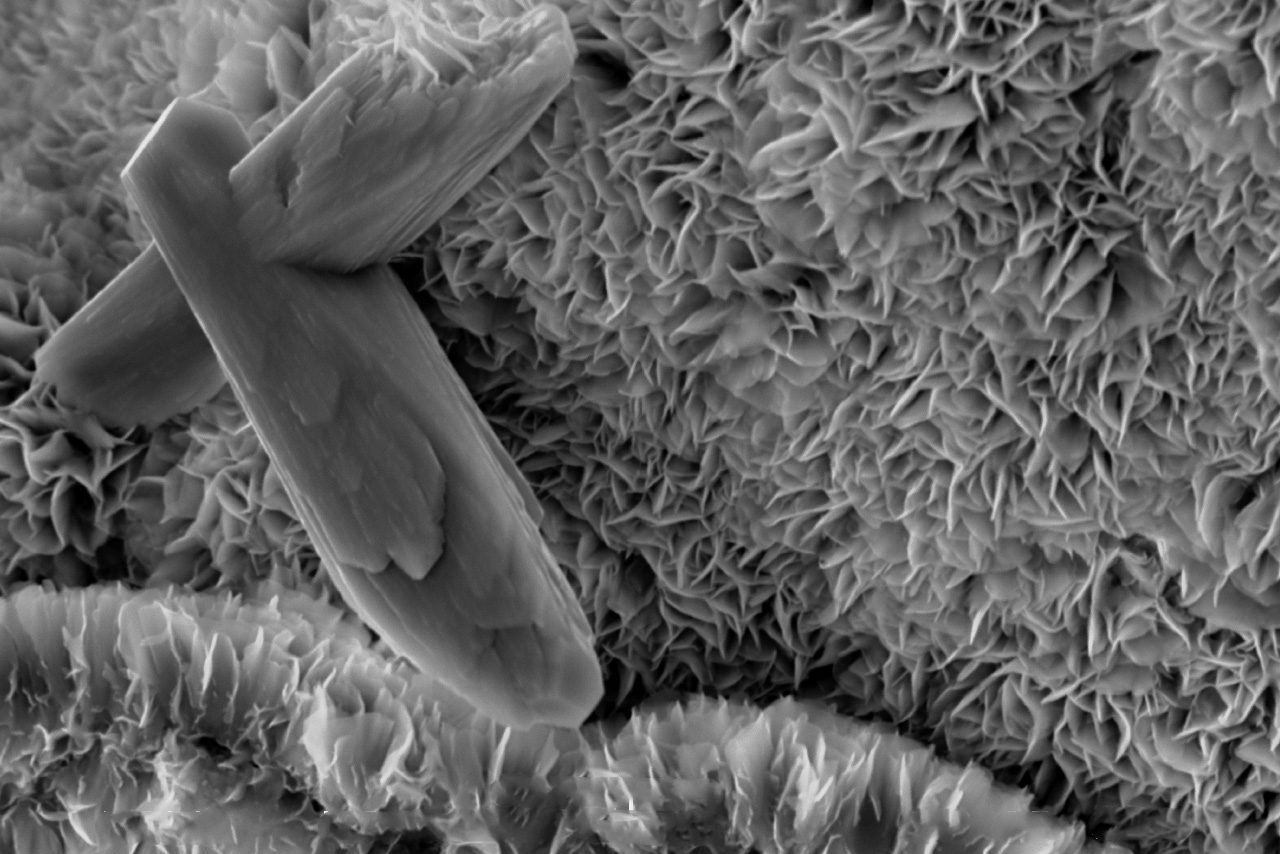MIT geologists have found that a clay mineral on the seafloor, called smectite, has a surprisingly powerful ability to sequester carbon over millions of years.
Under a microscope, a single grain of the clay resembles the folds of an accordion. These folds are known to be effective traps for organic carbon.
Now, the MIT team has shown that the carbon-trapping clays are a product of plate tectonics: When oceanic crust crushes against a continental plate, it can bring rocks to the surface that, over time, can weather into minerals including smectite. Eventually, the clay sediment settles back in the ocean, where the minerals trap bits of dead organisms in their microscopic folds. This keeps the organic carbon from being consumed by microbes and expelled back into the atmosphere as carbon dioxide.
Over millions of years, smectite can have a global effect, helping to cool the entire planet. Through a series of analyses, the researchers showed that smectite was likely produced after several major tectonic events over the last 500 million years. During each tectonic event, the clays trapped enough carbon to cool the Earth and induce the subsequent ice age.
The findings are the first to show that plate tectonics can trigger ice ages through the production of carbon-trapping smectite.
These clays can be found in certain tectonically active regions today, and the scientists believe that smectite continues to sequester carbon, providing a natural, albeit slow-acting, buffer against humans’ climate-warming activities.
“The influence of these unassuming clay minerals has wide-ranging implications for the habitability of planets,” says Joshua Murray, a graduate student in MIT’s Department of Earth, Atmospheric, and Planetary Sciences. “There may even be a modern application for these clays in offsetting some of the carbon that humanity has placed into the atmosphere.”
Murray and Oliver Jagoutz, professor of geology at MIT, have published their findings today in Nature Geoscience.
A clear and present clay
The new study follows up on the team’s previous work, which showed that each of the Earth’s major ice ages was likely triggered by a tectonic event in the tropics. The researchers found that each of these tectonic events exposed ocean rocks called ophiolites to the atmosphere. They put forth the idea that, when a tectonic collision occurs in a tropical region, ophiolites can undergo certain weathering effects, such as exposure to wind, rain, and chemical interactions, that transform the rocks into various minerals, including clays.
“Those clay minerals, depending on the kinds you create, influence the climate in different ways,” Murray explains.
At the time, it was unclear which minerals could come out of this weathering effect, and whether and how these minerals could directly contribute to cooling the planet. So, while it appeared there was a link between plate tectonics and ice ages, the exact mechanism by which one could trigger the other was still in question.
With the new study, the team looked to see whether their proposed tectonic tropical weathering process would produce carbon-trapping minerals, and in quantities that would be sufficient to trigger a global ice age.
The team first looked through the geologic literature and compiled data on the ways in which major magmatic minerals weather over time, and on the types of clay minerals this weathering can produce. They then worked these measurements into a weathering simulation of different rock types that are known to be exposed in tectonic collisions.
“Then we look at what happens to these rock types when they break down due to weathering and the influence of a tropical environment, and what minerals form as a result,” Jagoutz says.
Next, they plugged each weathered, “end-product” mineral into a simulation of the Earth’s carbon cycle to see what effect a given mineral might have, either in interacting with organic carbon, such as bits of dead organisms, or with inorganic, in the form of carbon dioxide in the atmosphere.
From these analyses, one mineral had a clear presence and effect: smectite. Not only was the clay a naturally weathered product of tropical tectonics, it was also highly effective at trapping organic carbon. In theory, smectite seemed like a solid connection between tectonics and ice ages.
But were enough of the clays actually present to trigger the previous four ice ages? Ideally, researchers should confirm this by finding smectite in ancient rock layers dating back to each global cooling period.
“Unfortunately, as clays are buried by other sediments, they get cooked a bit, so we can’t measure them directly,” Murray says. “But we can look for their fingerprints.”
A slow build
The team reasoned that, as smectites are a product of ophiolites, these ocean rocks also bear characteristic elements such as nickel and chromium, which would be preserved in ancient sediments. If smectites were present in the past, nickel and chromium should be as well.
To test this idea, the team looked through a database containing thousands of oceanic sedimentary rocks that were deposited over the last 500 million years. Over this time period, the Earth experienced four separate ice ages. Looking at rocks around each of these periods, the researchers observed large spikes of nickel and chromium, and inferred from this that smectite must also have been present.
By their estimates, the clay mineral could have increased the preservation of organic carbon by less than one-tenth of a percent. In absolute terms, this is a miniscule amount. But over millions of years, they calculated that the clay’s accumulated, sequestered carbon was enough to trigger each of the four major ice ages.
“We found that you really don’t need much of this material to have a huge effect on the climate,” Jagoutz says.
“These clays also have probably contributed some of the Earth’s cooling in the last 3 to 5 million years, before humans got involved,” Murray adds. “In the absence of humans, these clays are probably making a difference to the climate. It’s just such a slow process.”
“Jagoutz and Murray’s work is a nice demonstration of how important it is to consider all biotic and physical components of the global carbon cycle,” says Lee Kump, a professor of geosciences at Penn State University, who was not involved with the study. “Feedbacks among all these components control atmospheric greenhouse gas concentrations on all time scales, from the annual rise and fall of atmospheric carbon dioxide levels to the swings from icehouse to greenhouse over millions of years.”
Could smectites be harnessed intentionally to further bring down the world’s carbon emissions? Murray sees some potential, for instance to shore up carbon reservoirs such as regions of permafrost. Warming temperatures are predicted to melt permafrost and expose long-buried organic carbon. If smectites could be applied to these regions, the clays could prevent this exposed carbon from escaping into and further warming the atmosphere.
“If you want to understand how nature works, you have to understand it on the mineral and grain scale,” Jagoutz says. “And this is also the way forward for us to find solutions for this climatic catastrophe. If you study these natural processes, there’s a good chance you will stumble on something that will be actually useful.”
This research was funded, in part, by the National Science Foundation.












